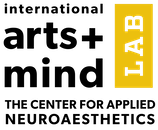
down with nature
Convolvulus tricolor L. Bindweed
Staying In Rhythm with Nature
Article authored by the International Arts + Mind Lab, Johns Hopkins University
In Rhythm with Nature offers a virtual multisensory experience, with flora and fauna, colors and soundscapes sourced directly from the natural world.
Designed by the artist Anna Glover in collaboration with Google Arts and Culture Lab, In Rhythm with Nature is an artistic interpretation of Carl Linnaeus’s flower clock. Linnaeus was a renowned botanist and taxonomist who developed a modern system to identify, name, and classify living things. His unique garden design took advantage of the natural circadian rhythms of different plants, using the observed opening and closing of their blooms to mark the time of day.
Like our plant friends, humans also respond to changes in the environment through a circadian rhythm. This 24-hour internal clock seated in the brain helps to regulate our sleep-wake cycle. From morning to afternoon, we move into an increasingly alert state before downshifting in the evening to prepare for nighttime sleep. In Rhythm with Nature honors our circadian rhythms by synchronizing its sights and sounds to your local time.
We offer this experience as digital refreshment for the mind, allowing you to take a break and enjoy a healthful dose of Mother Nature anywhere, anytime.
A Dose of Nature
Exposure to the natural world can boost our moods, lessen anxiety, promote physical activity, and even improve interactions with our neighbors.
What is nature’s secret? It may come down to nature’s ability to lower our stress levels and improve our sleep quality. These improvements to our underlying biology may account for the growing evidence that nature experiences can prevent the development of mental illnesses, such as depression, anxiety disorders, and attention deficit and hyperactivity disorder (ADHD).
Biophilia
Humans are innately drawn to the natural world. Scientists refer to our love affair with nature and living things as ‘biophilia,’ a term popularized by biologist E.O. Wilson. In his 1984 book, Wilson theorized that our early ancestors evolved to take a particular interest in natural phenomena that suggested opportunities (food) or threats (predators) to survival.
Today, biophilia is encoded in our DNA, but our interest in nature is less about day-to-day survival and more centered on pleasure. And yet, exposure to nature may be essential to our longevity in the 21st century, particularly when it comes to our mental health and wellbeing.
A Natural Retreat
Nature refreshes our minds by keeping us in the present moment, similar to the practice of mindfulness meditation.
Planning, managing, and taking care of daily tasks can become very stressful if we do not take the occasional break. Out in nature, we can allow our minds to drift without the pressure of having to make immediate decisions or solve problems. While the natural world can be captivating, scientists believe it doesn’t demand too much of our directed attention.
This natural retreat from the daily grind helps restore us to a state of mind where we can think more clearly and calmly. Time in nature and mindfulness techniques, like guided breathwork, both offer these benefits, and when combined, the benefits are even greater.
Earthly Designs
Biophilic design considers the restorative benefits of nature and incorporates nature experiences into our environment, both physical and virtual. That’s right—even simulations of nature, such as videos featuring natural landscapes or immersive VR experiences, have been shown to reduce physiological and psychological signs of stress. These virtual options make nature and its benefits more accessible when you can’t easily enjoy the great outdoors.
- Anthericum Ramosum L. (St. Bernard's Lily) 08:00am
- Convolvulus Tricolor 09:00am
- Trichodiadema Babrata (L.) Schwartes 10:00am
- Anagallis Arvensis L. (Scarlet pimpernell) 11:00am
- Petrorhagia Prolifera (L.) Ball & Heywood (Proliferous Pink) 12:00pm
- Hypochaeris Glabra L. (Smooth cat's-ear) 1:00pm
- Malva Caroliniana L. 2:00pm
- Nymphaea Alba L. White Water lily 3:00pm
- Mesembryanthemum Crystallinum (Ice-Plant) 4:00pm
- Calendula Officinalis L. (Pot marigold) 5:00pm
- Hieracium Aurantiacum (Hawkweed) 6:00pm
- Hemerocallis Lilioasphodelus L.(Day-lily) 7:00pm
- Papaver Nudicaule L. (Iceland poppy) 8:00pm
Experience handcrafted by the artist Anna Glover , in collaboration with Google Arts and Culture Lab, Google's Wellbeing Lab, and Johns Hopkins International Arts + Mind Lab.
Lear more about Arts + Health and Wellbeing here


